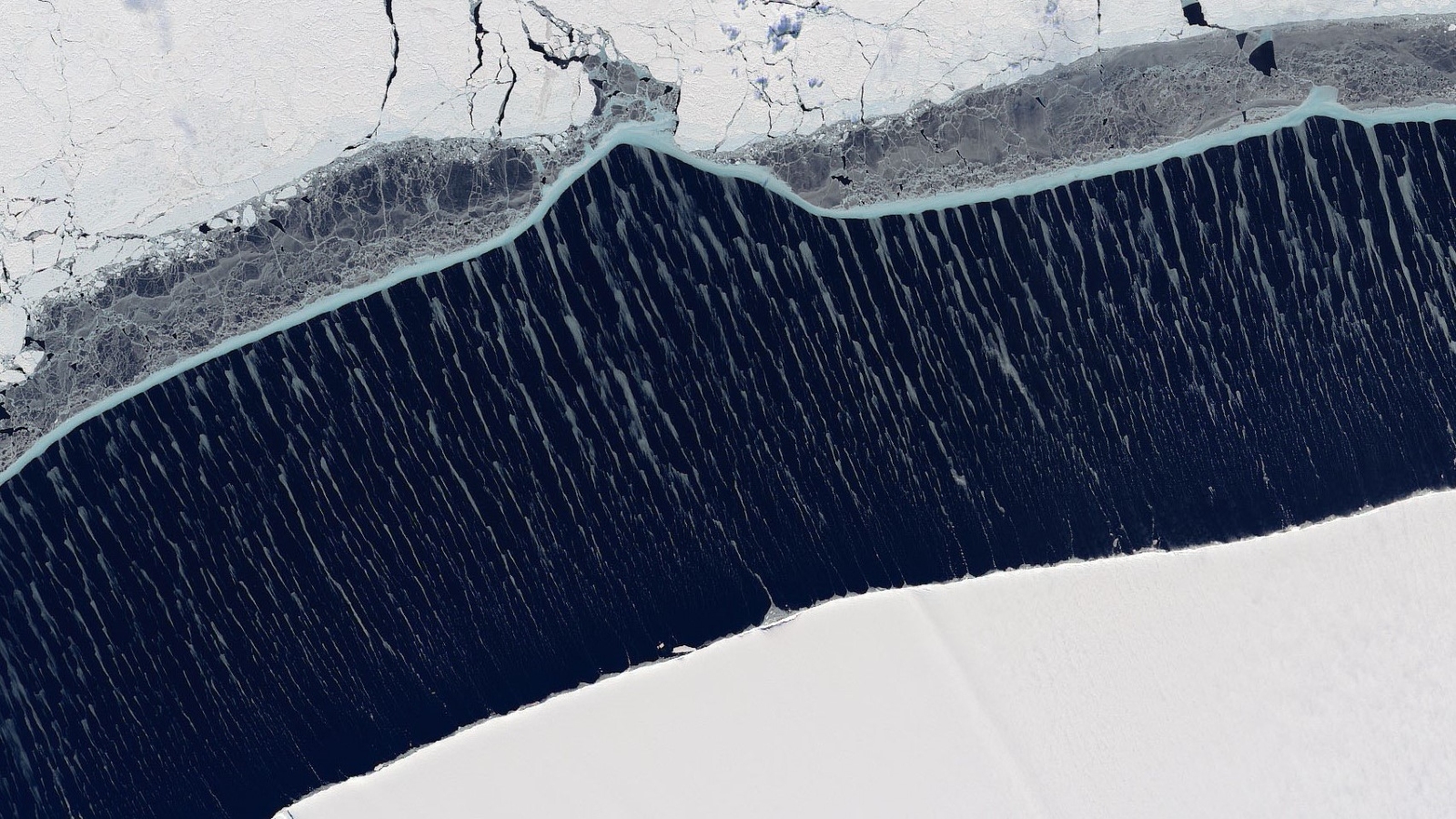
Harry Baker
Harry is a U.K.-based senior staff writer at Live Science. He studied marine biology at the University of Exeter before training to become a journalist. He covers a wide range of topics including space exploration, planetary science, space weather, climate change, animal behavior and paleontology. His recent work on the solar maximum won "best space submission" at the 2024 Aerospace Media Awards and was shortlisted in the "top scoop" category at the NCTJ Awards for Excellence in 2023. He also writes Live Science's weekly Earth from space series.
Latest articles by Harry Baker
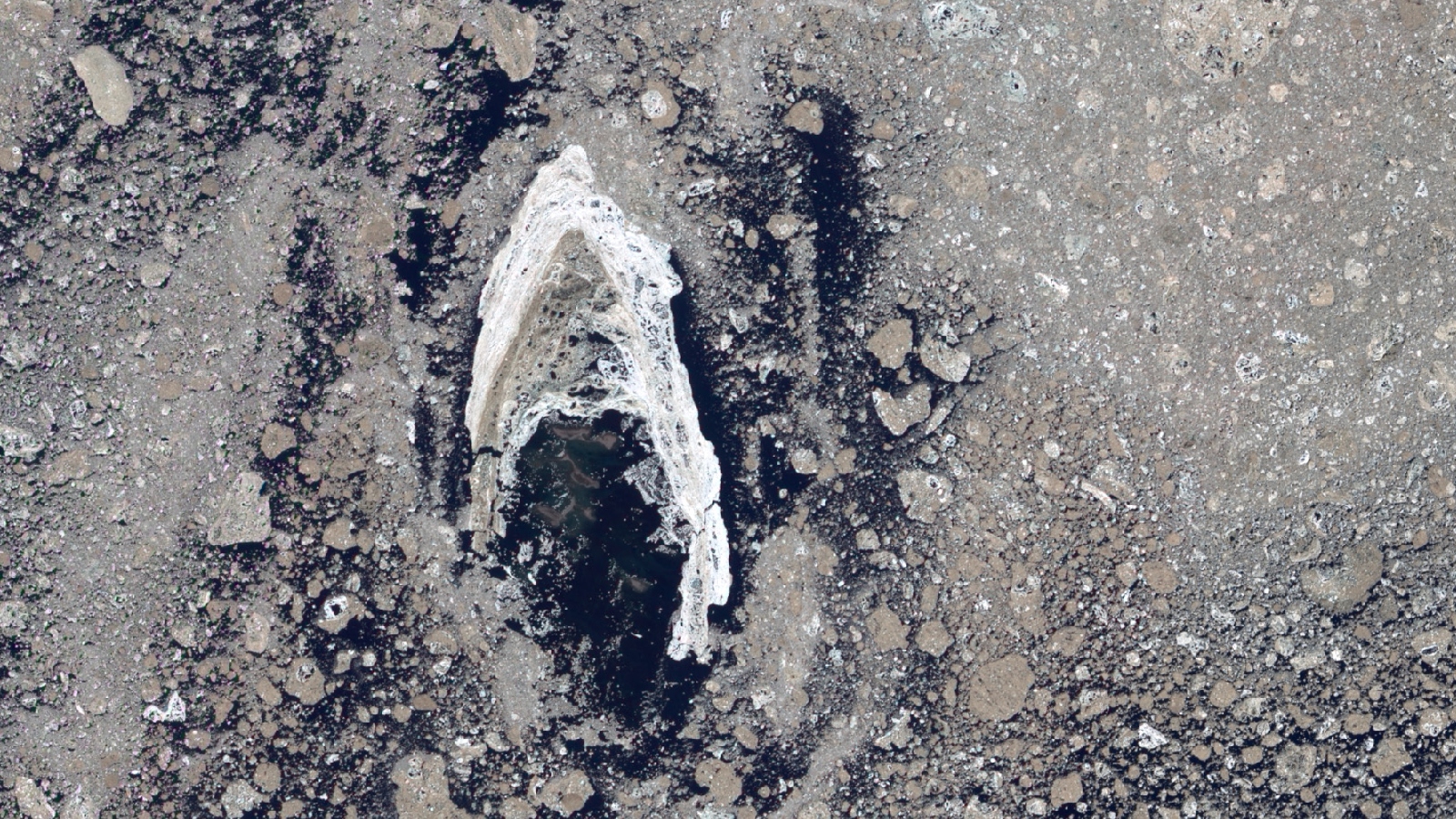
Iconic 'Star Trek' symbol shines brightly in sea of muddy Arctic sea ice
By Harry Baker published
Earth from space A 2012 satellite photo captured a patch of snow-covered sea ice with an uncannily similar shape to badges pinned on the uniforms of Starfleet officers in the "Star Trek" franchise.
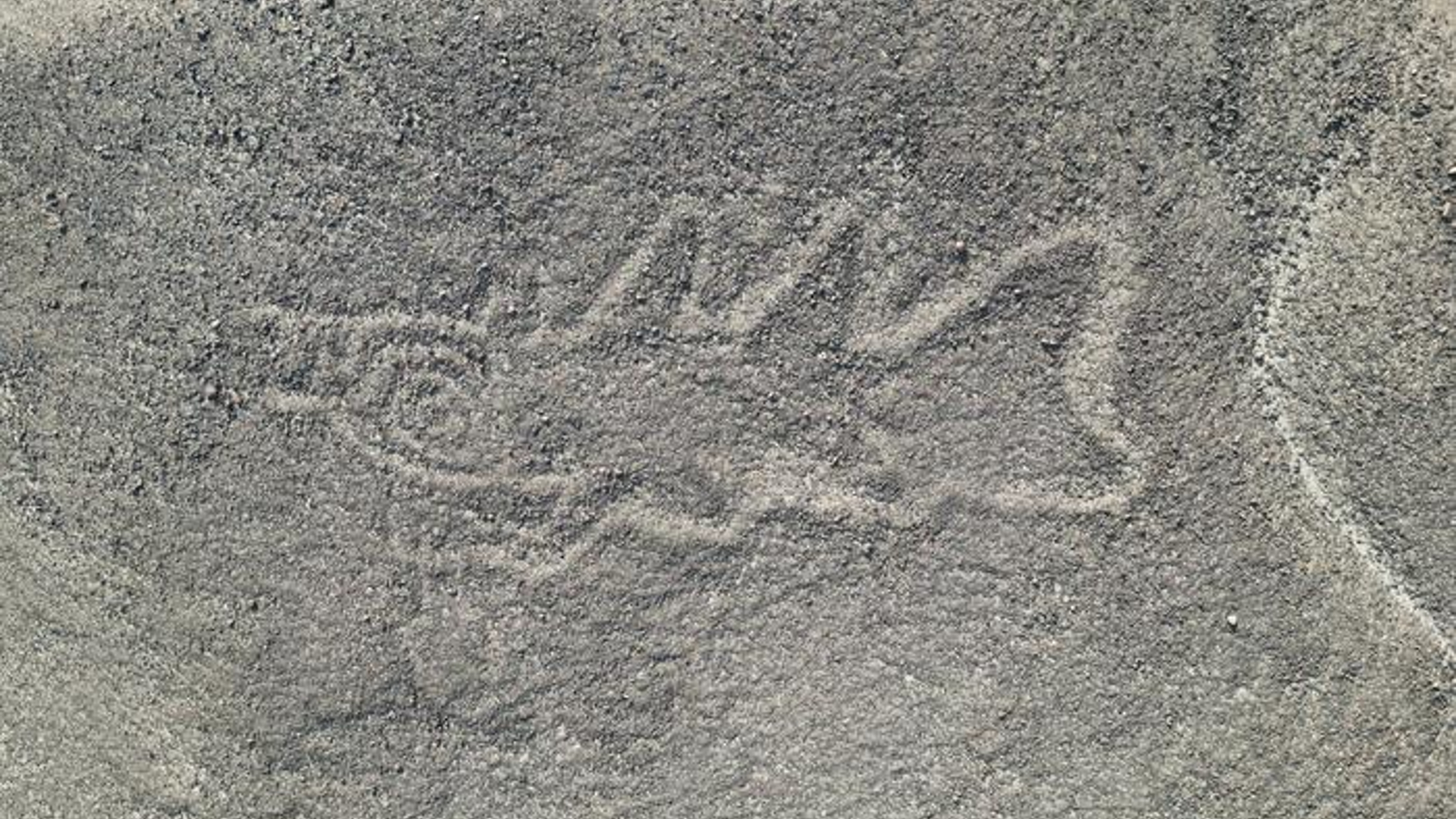
'Knife-wielding orca' and alien-looking figures among 300 Nazca Lines discovered in groundbreaking AI study
By Harry Baker published
Scientists used AI to find 303 never-before-seen geoglyphs in Peru's Nazca Desert, including abstract humanoid figures, ancient ceremonies, "decapitated heads" and a "killer whale holding a knife."
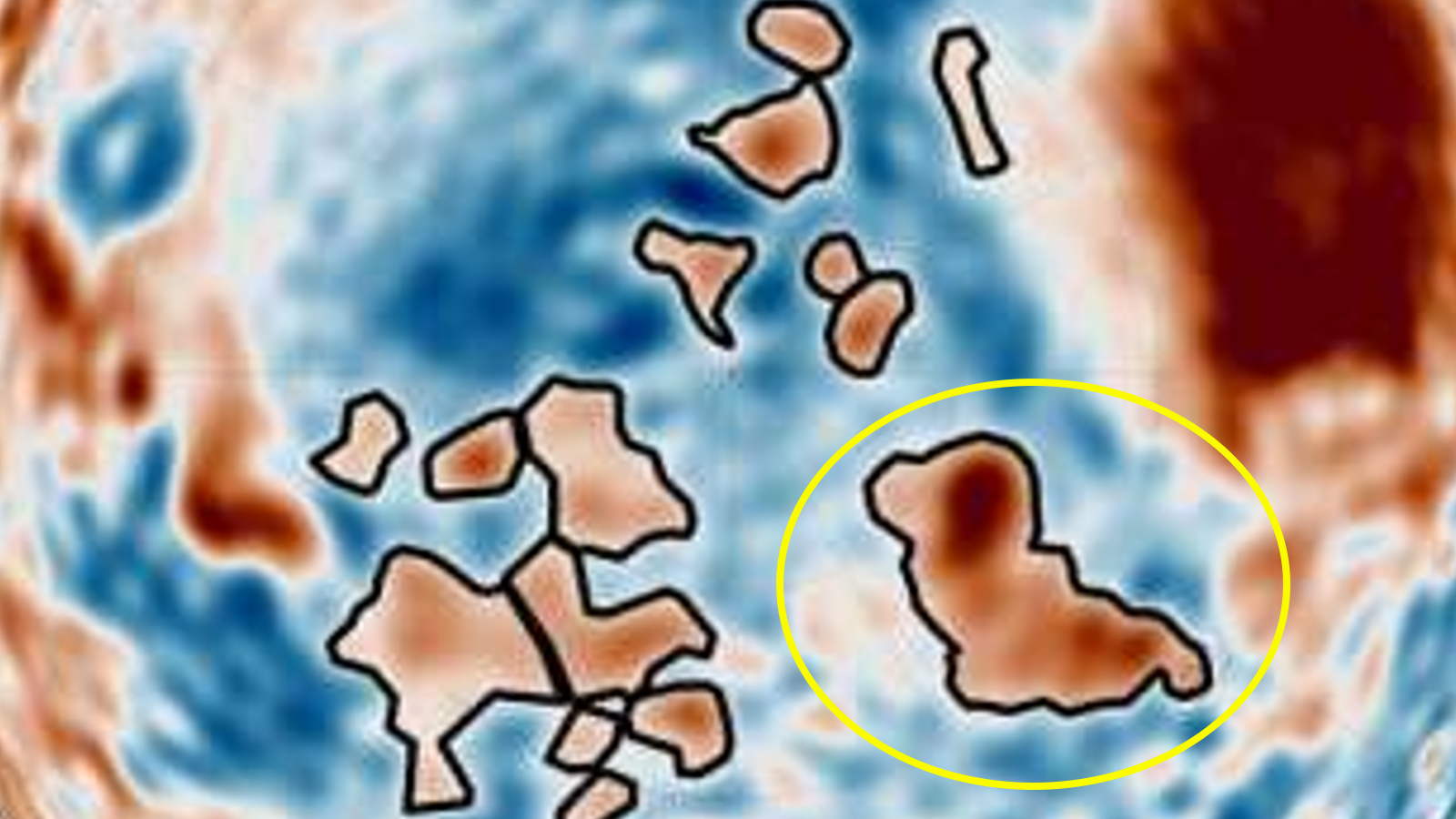
'Martian dog' and dozens of other mysterious blobs found hiding under Mars' north pole in new 'gravity map'
By Harry Baker published
A new map that details gravitational anomalies on Mars has revealed 20 mysteriously dense blobs, including a dog-shaped mass, buried below the planet's north pole. And researchers have no clear idea where they came from.
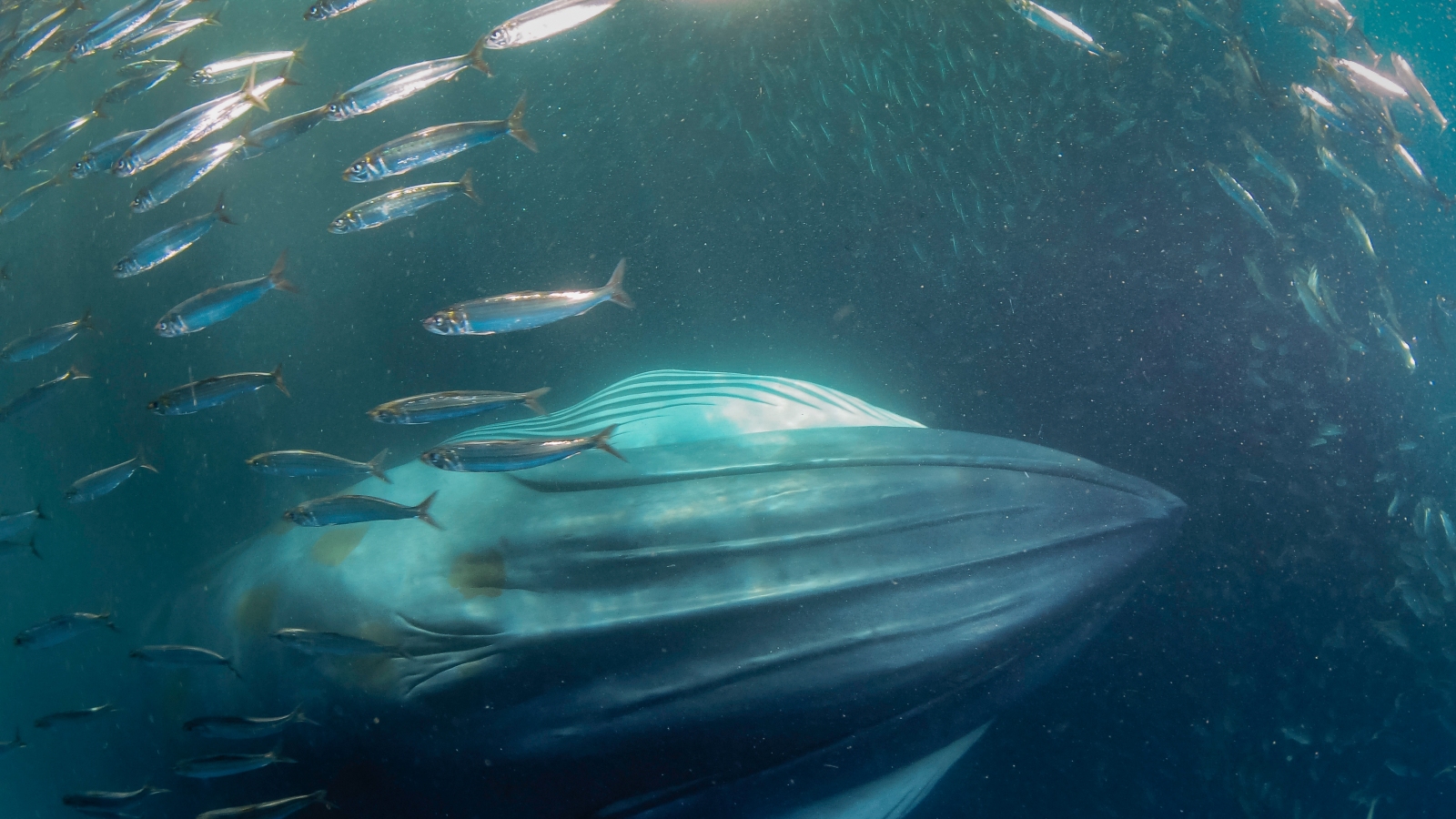
Mysterious sound coming from the Mariana Trench has finally been explained
By Harry Baker published
A new study has revealed the exact origin of the Pacific Ocean's mysterious "biotwang" noises, which were first detected by underwater surveys near the Mariana Trench in 2014.

Van Gogh's 'Starry Night' contains surprisingly accurate physics — suggesting he understood the hidden 'dynamism of the sky'
By Harry Baker published
A new analysis of the brushstrokes and colors in Vincent van Gogh's famous painting Starry Night reveals a striking similarity to "hidden turbulence" in Earth's atmosphere, suggesting the iconic artist had a surprisingly detailed understanding of natural processes.
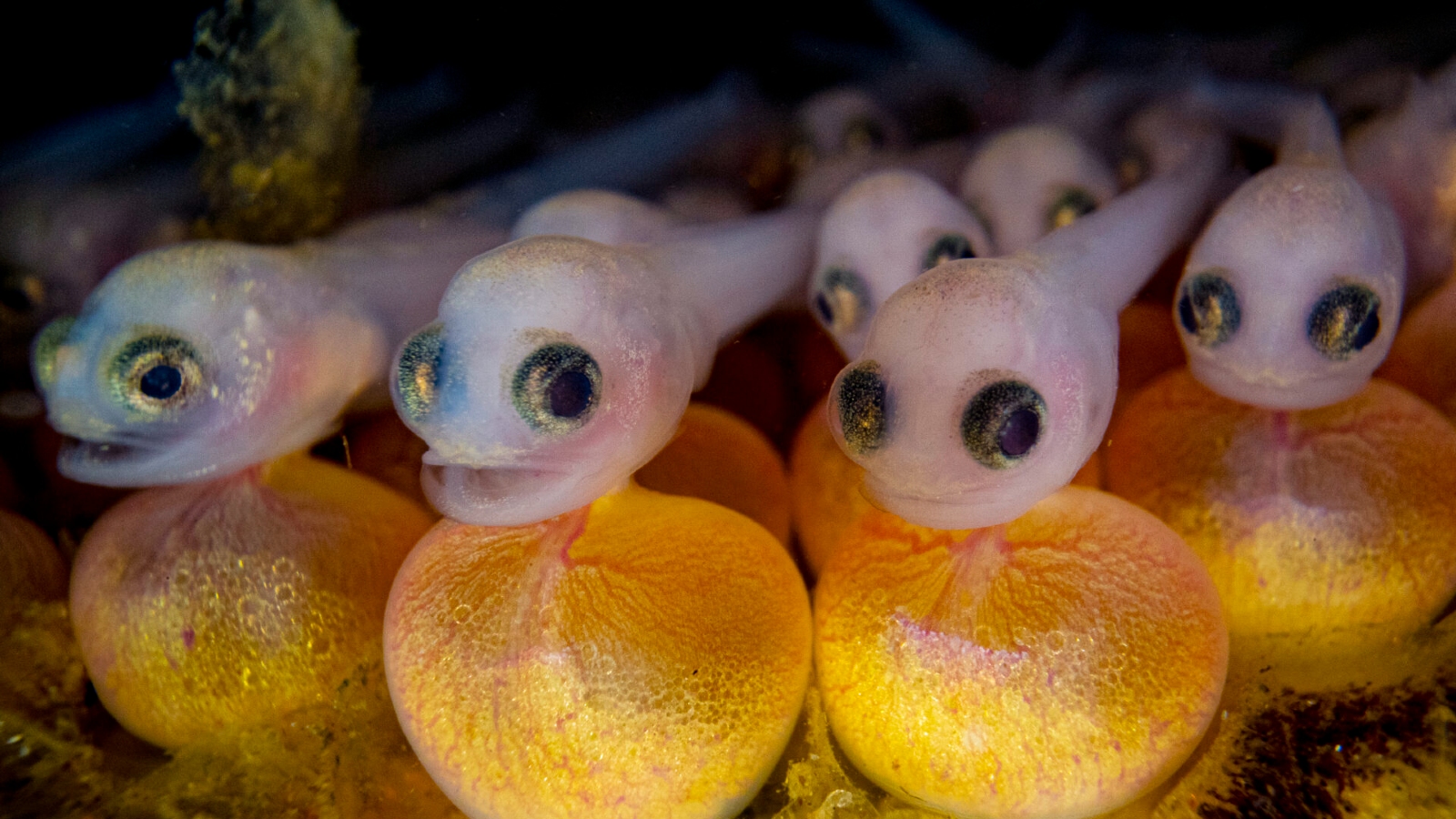
Ocean Photographer of the Year 2024: See stunning photos of hungry whale, surfing seagull, freaky fish babies, land-loving eel and adorable toxic octopus
By Harry Baker published
Check out some of the best photos from 2024's Ocean Photographer of the Year competition.
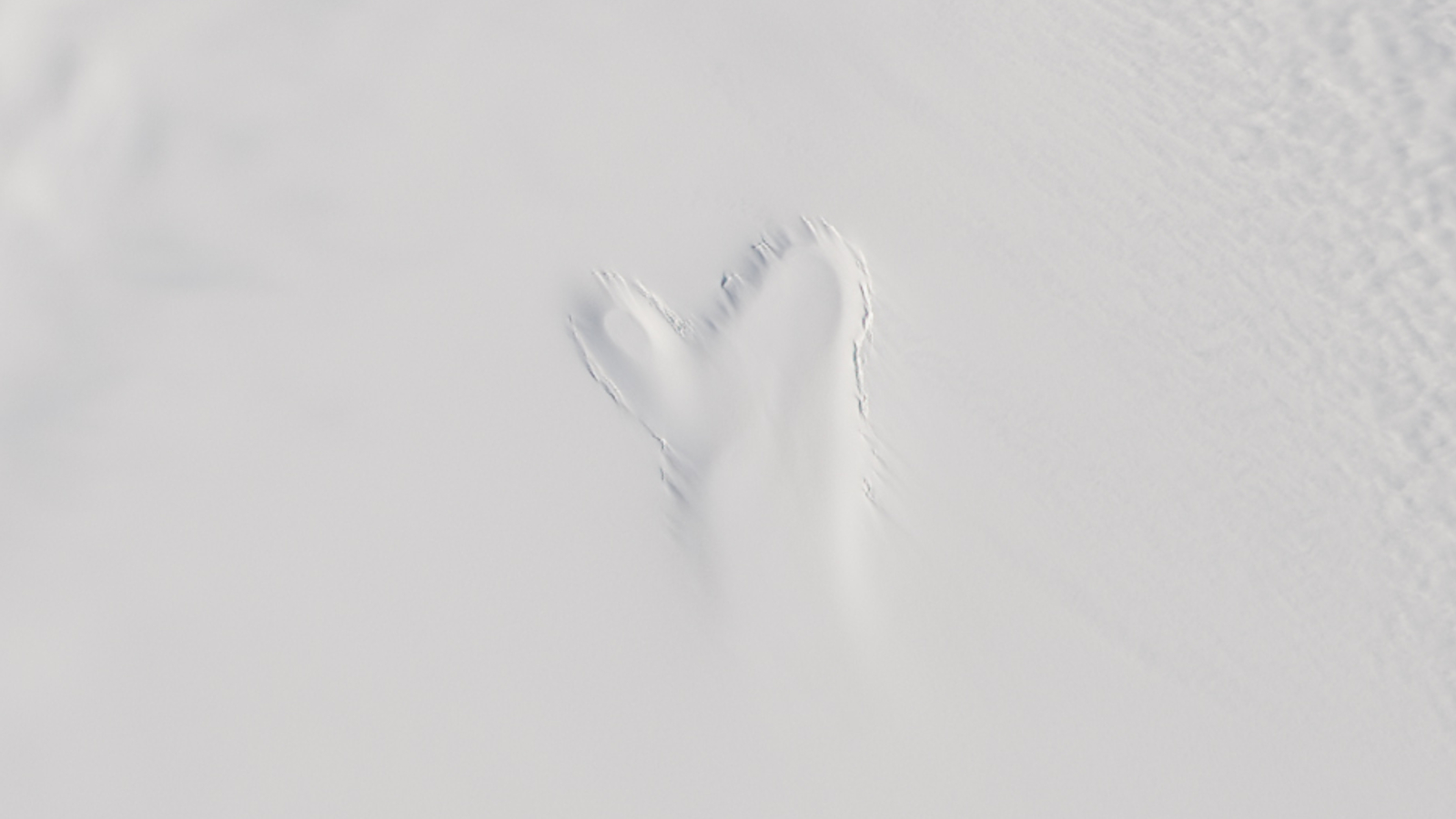
Ghostly figure emerges in Greenland ice after underground lake collapses
By Harry Baker published
Earth from space In 2011, a ghostly depression, known as "the mitten," appeared on the surface of and ice sheet in Greenland after the unprecedented collapse of a concealed subglacial lake.
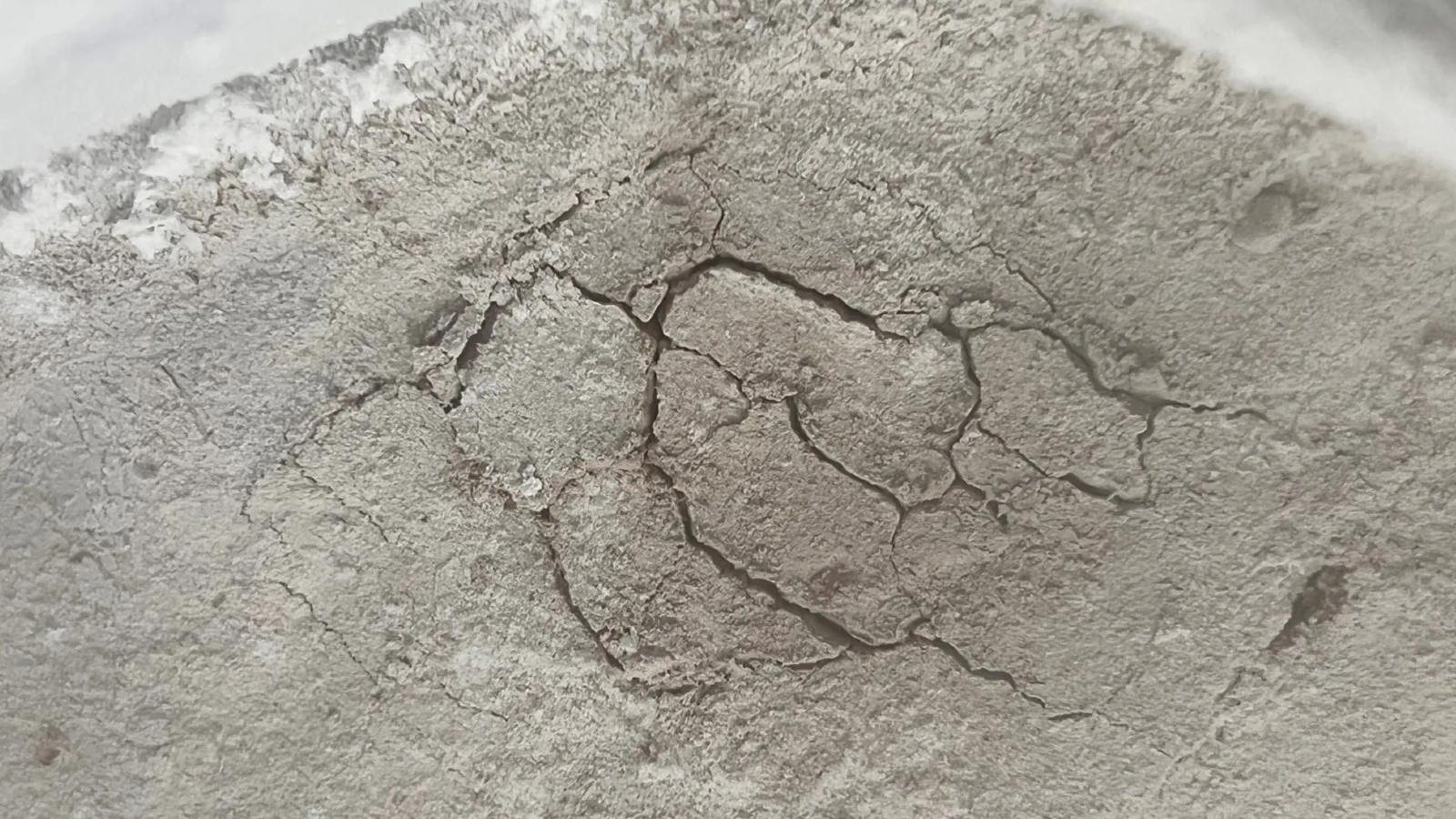
'Spiders on Mars' fully awakened on Earth for 1st time — and scientists are shrieking with joy
By Harry Baker published
Researchers have recreated the bizarre spider-like features seen on the surface of Mars for the first time ever. The breakthrough could help unravel further mysteries surrounding the static Martian arachnids.
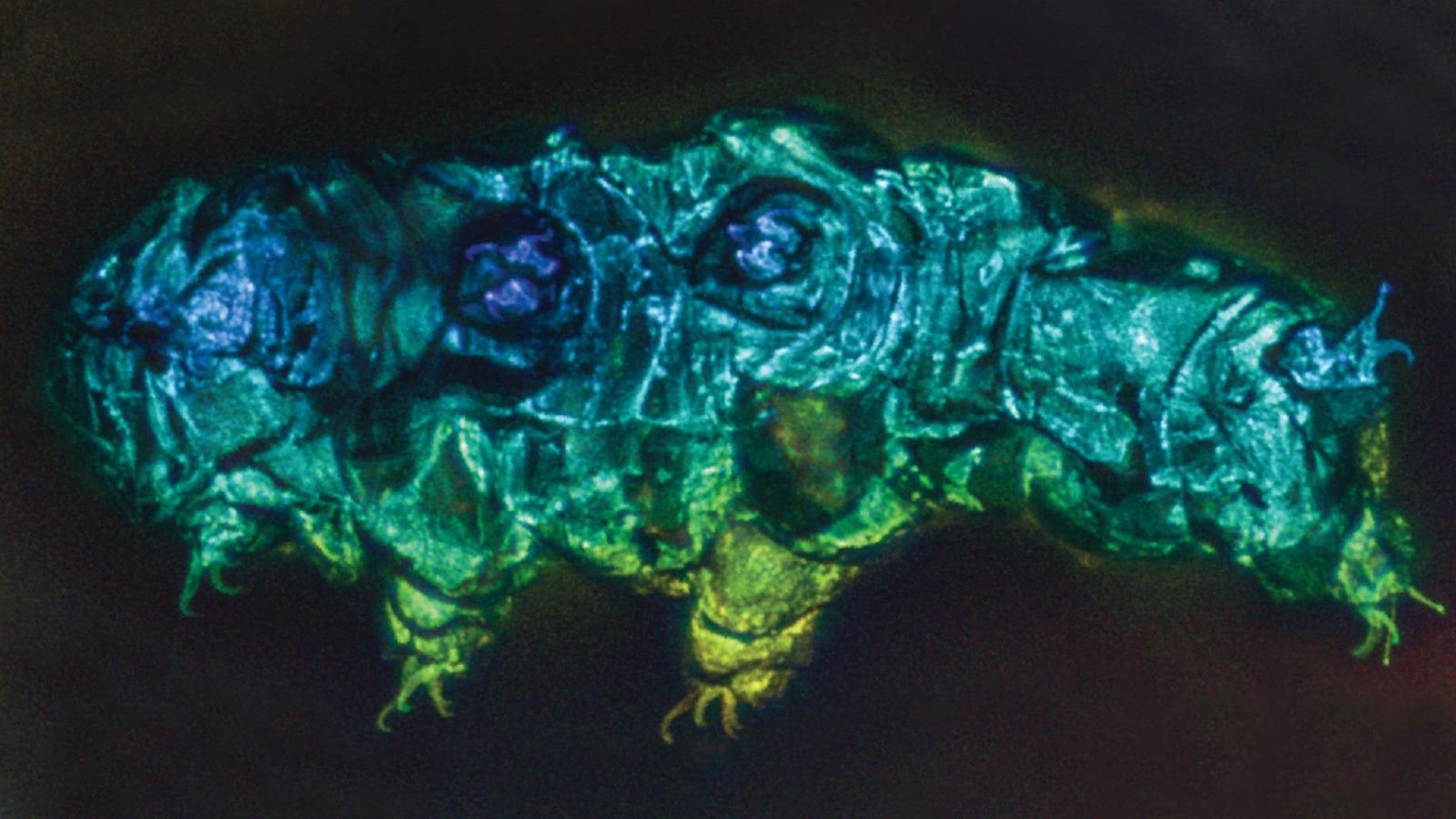
1st tardigrade fossils ever discovered hint at how they survived Earth's biggest mass extinction
By Elise Poore published
Detailed 3D images of the first tardigrade fossils ever discovered help scientists predict when tardigrades evolved their near-indestructibility — a trait that might have helped them survive multiple mass extinctions.
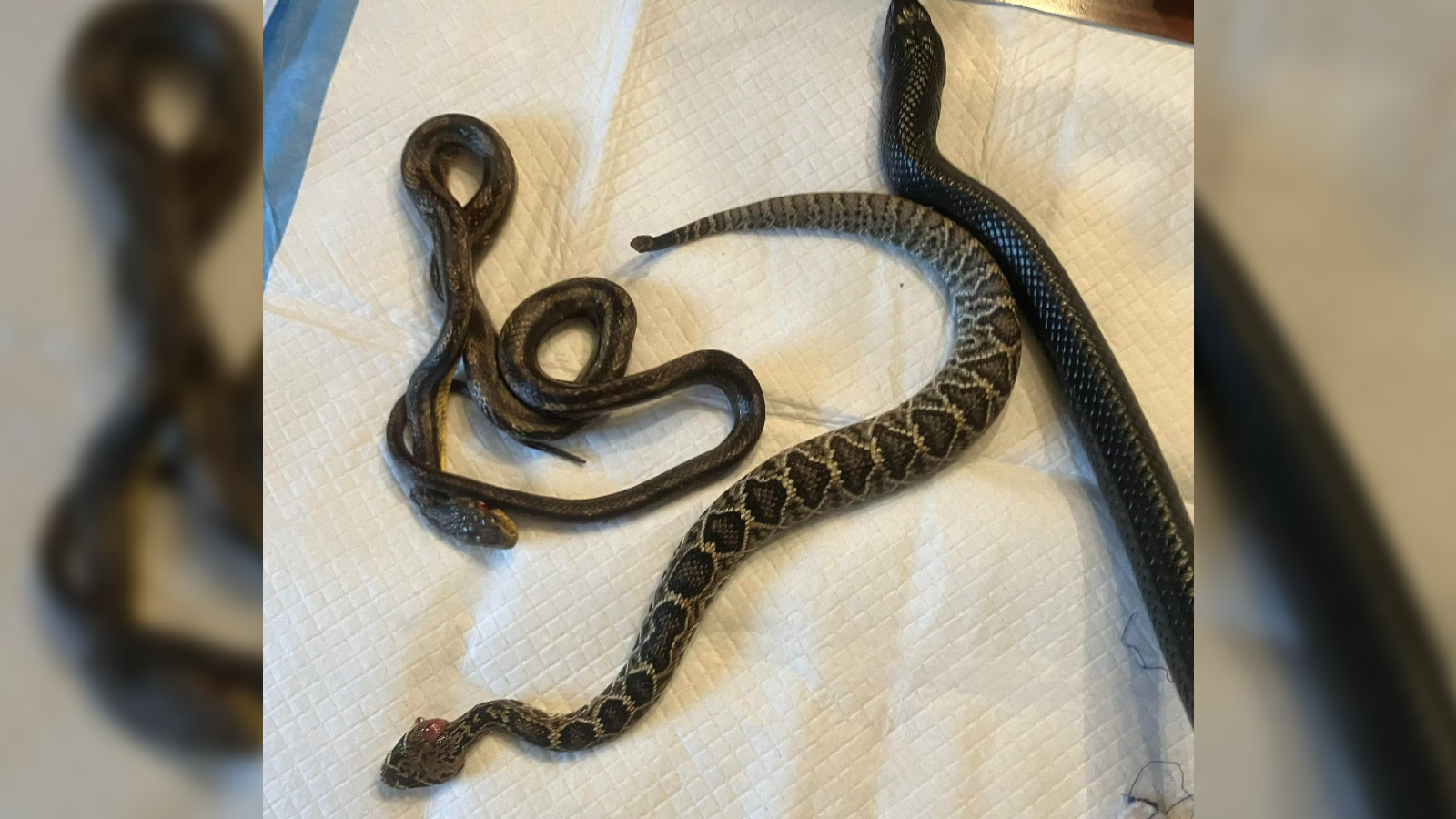
4-foot snake vomits up 2 smaller snakes — and 1 was still alive
By Harry Baker published
Wildlife officials in Georgia stumbled across a pair of snakes that had been "expelled" by a larger serpent, only to discover that one of the regurgitated victims was still alive.
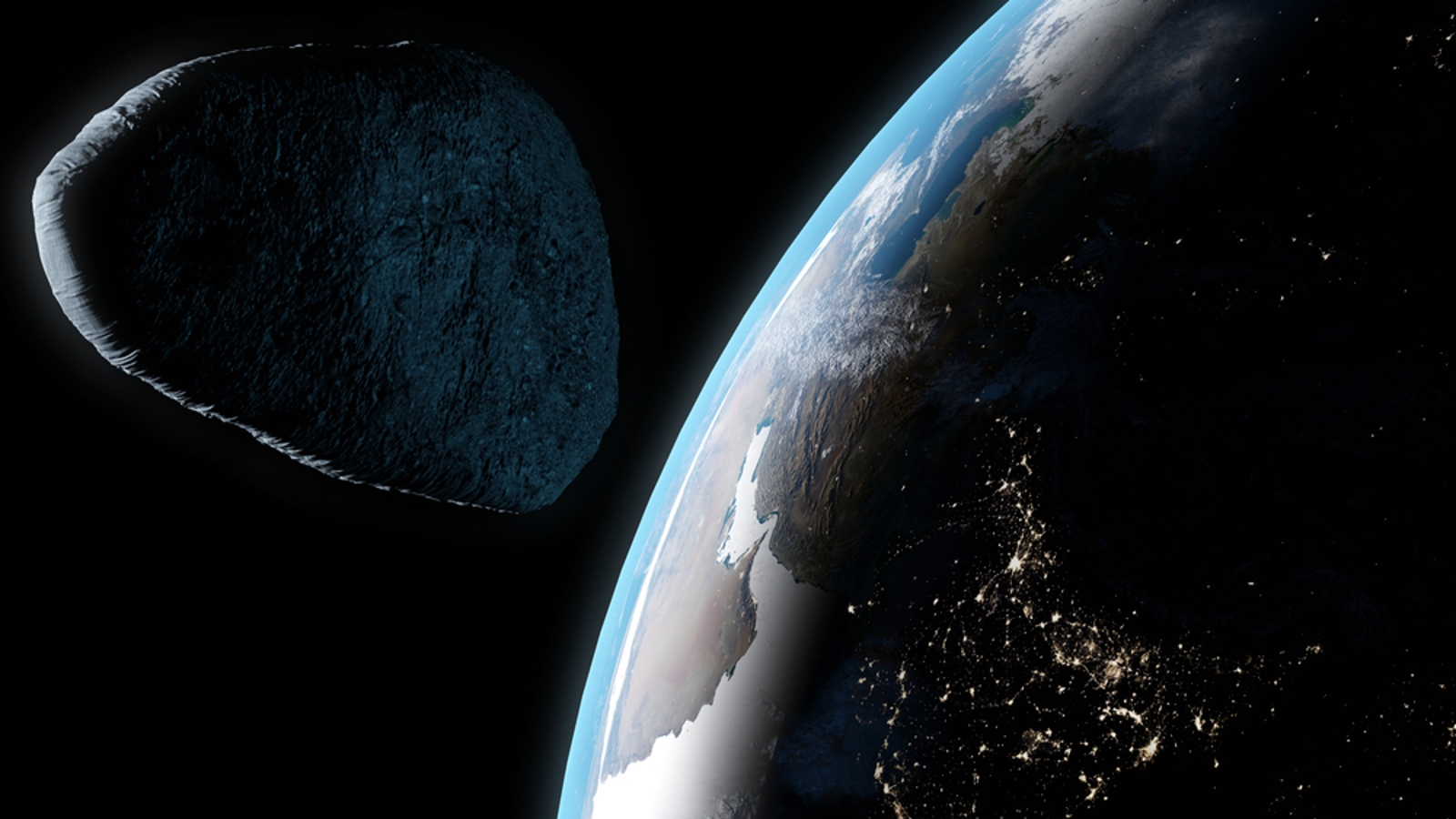
'God of Chaos' asteroid Apophis could still hit Earth in 2029, study hints — but we won't know for 3 more years
By Harry Baker published
New simulations reveal that there is an extremely small chance that the "city-killer" asteroid Apophis could be nudged onto a collision course with Earth by another asteroid before it flies past our planet in 2029.
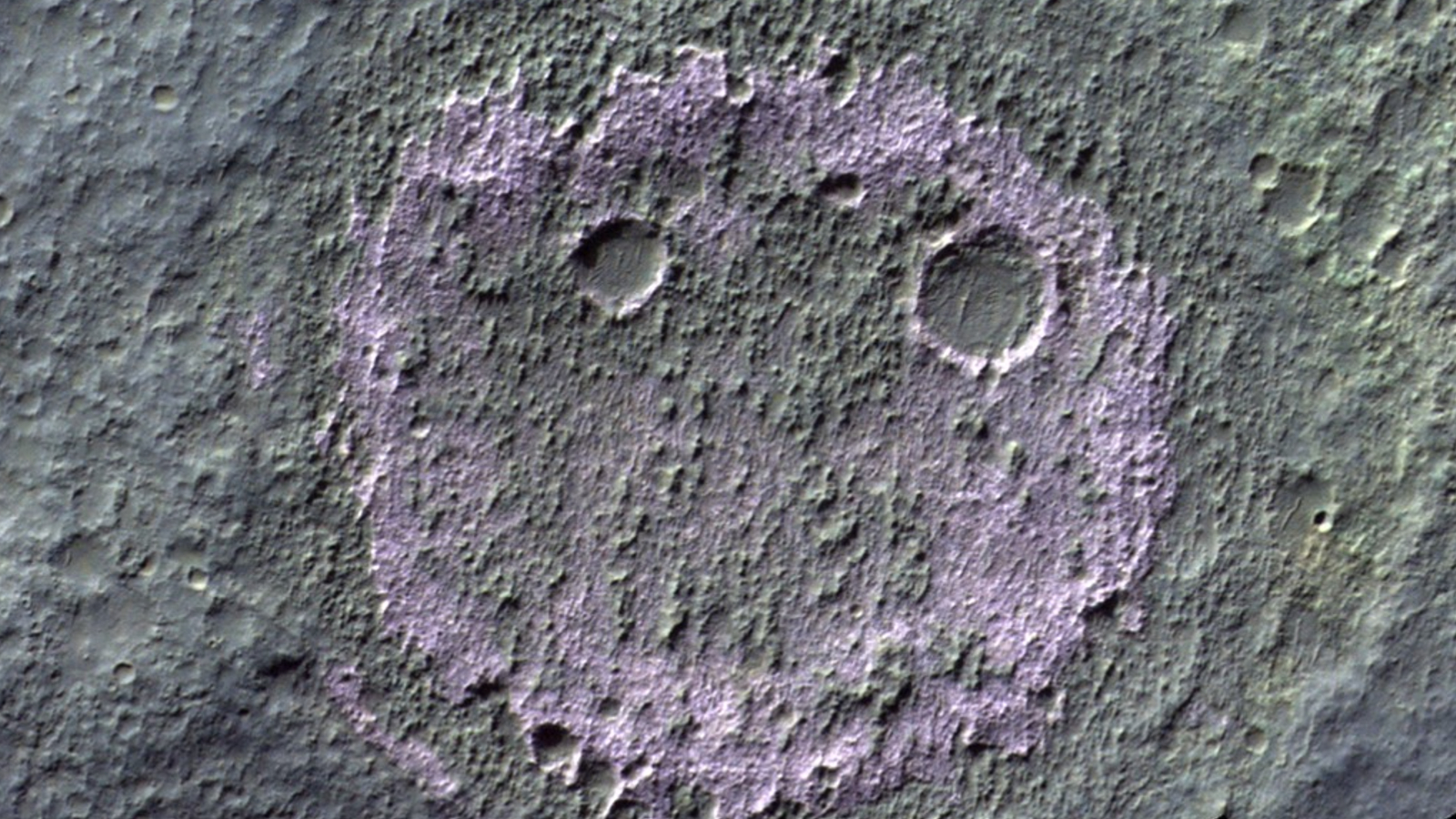
Scientists spot ancient 'smiley face' on Mars — and it could contain signs of life
By Harry Baker published
Newly released images of Mars reveal a "smiley" salt deposit on the Red Planet's surface. A related study suggests that similar deposits, which were left behind from ancient lakes, may be a good place to look for signs of former life on Mars.

Japan to start building 1st 'zeta-class' supercomputer in 2025, 1,000 times more powerful than today's fastest machines
By Harry Baker published
Japan's new state-of-the-art supercomputer, which is due to cost more than $750 million to build, is set to turn on by 2030.
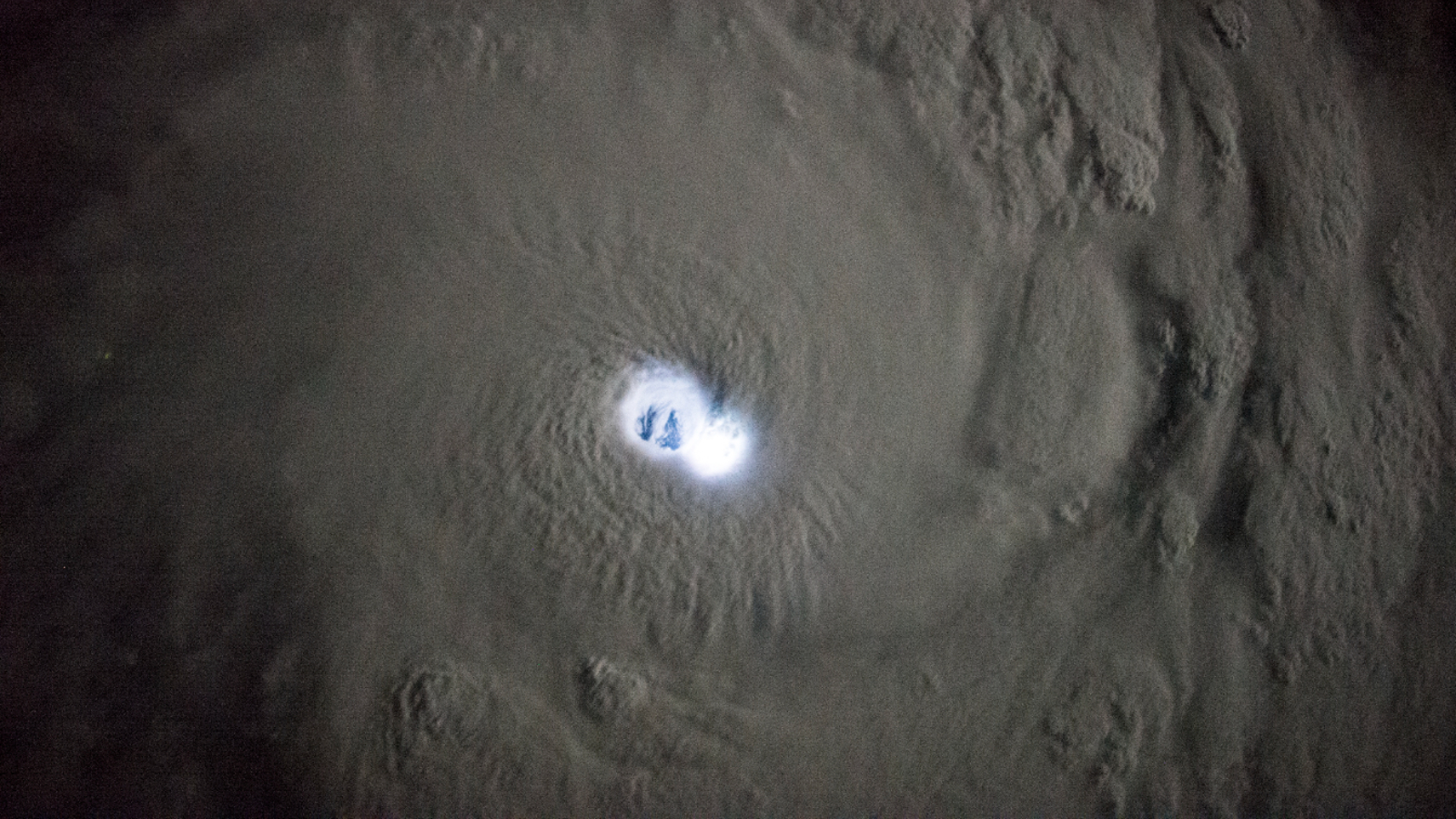
Successive lightning strikes illuminate eye of tropical cyclone in rare photos from space
By Harry Baker published
Earth from space A pair of 2015 astronaut photos taken just minutes apart shows the eye of tropical cyclone Bansi illuminated by two lightning strikes as the storm raged in the Indian Ocean off the coast of Madagascar.
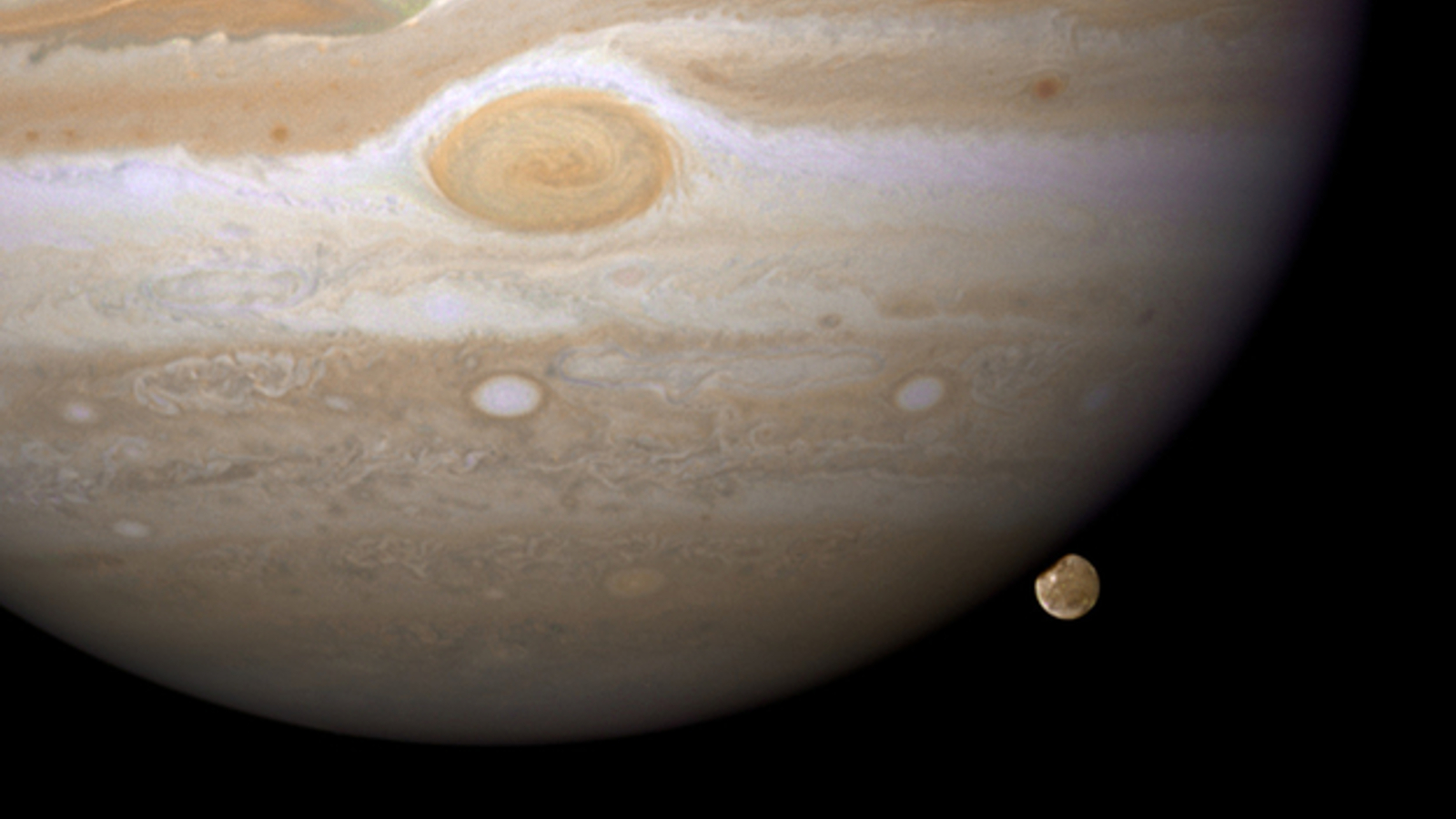
Asteroid 10 times bigger than the dinosaur-killing space rock smashed Jupiter's largest moon off its axis
By Harry Baker published
New simulations show that Jupiter's massive moon Ganymede was knocked off its axis when it was struck by a roughly 90-mile-wide asteroid around 4 billion years ago. The colossal collision was likely one of the biggest asteroid impacts the solar system has ever seen.
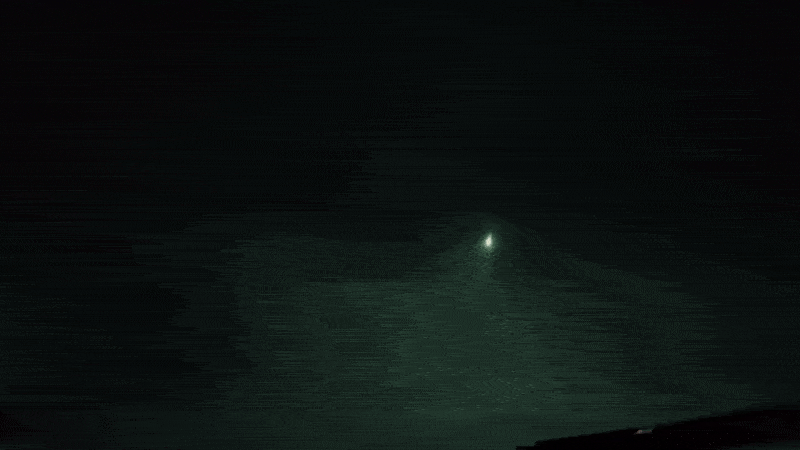
Asteroid slams into Earth triggering stunning green 'fireball' above the Philippines — 8 hours after it was 1st spotted
By Harry Baker published
On Wednesday (Sept. 4), astronomers spotted a never-before-seen asteroid, 2024 RW1, around eight hours before it entered Earth's atmosphere. The "harmless" space rock quickly burned up as predicted, creating a bright green streak across the night sky before spectacularly exploding.
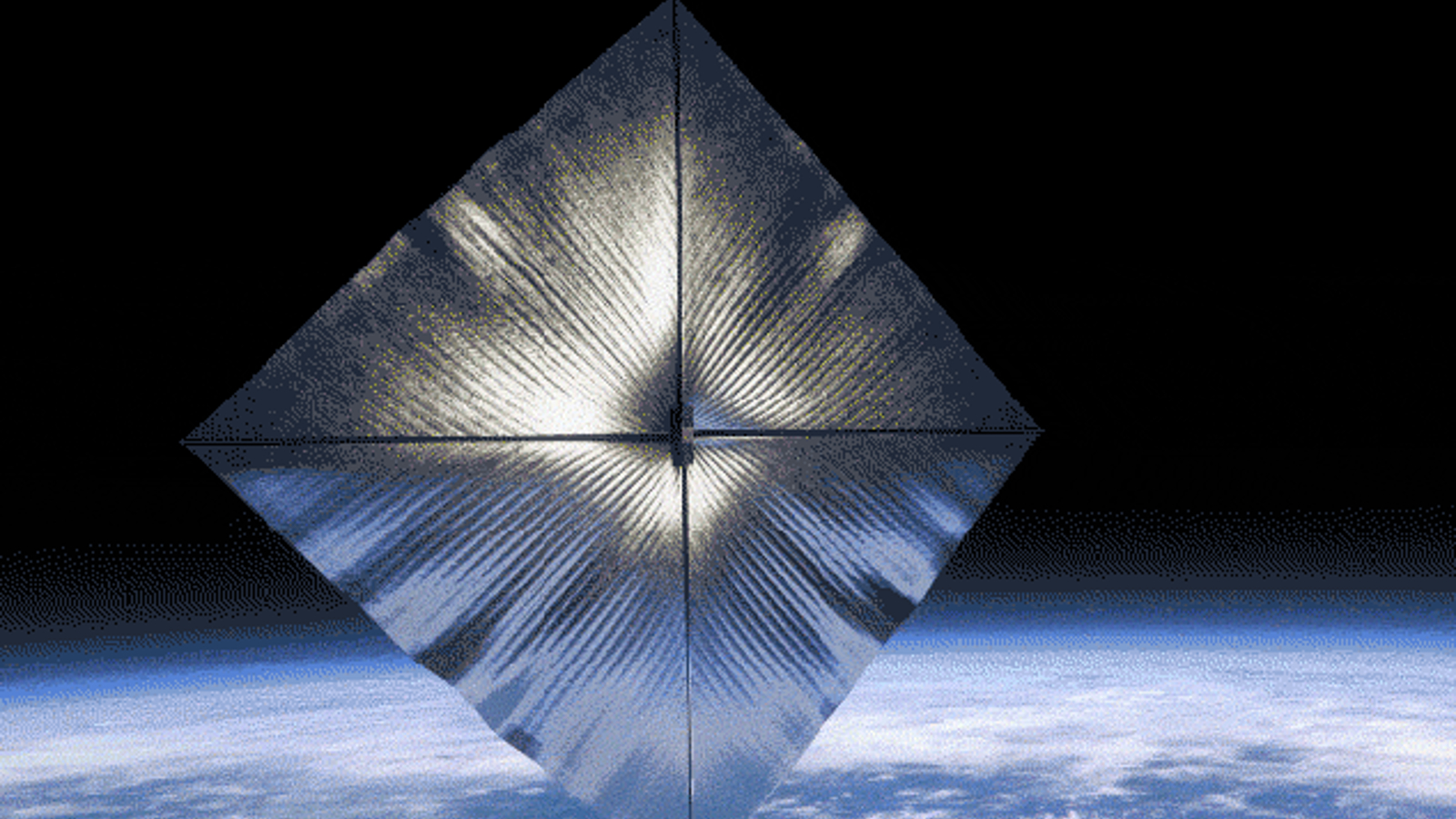
NASA's newly unfurled solar sail has started 'tumbling' end-over-end in orbit, surprising observations show
By Harry Baker published
A NASA spacecraft erected a large, foil solar sail in orbit around Earth last week, after a failed attempt days earlier. However, subsequent observations of the spacecraft show it is "tumbling or wobbling" through space, which may have also impacted its trajectory around our planet.
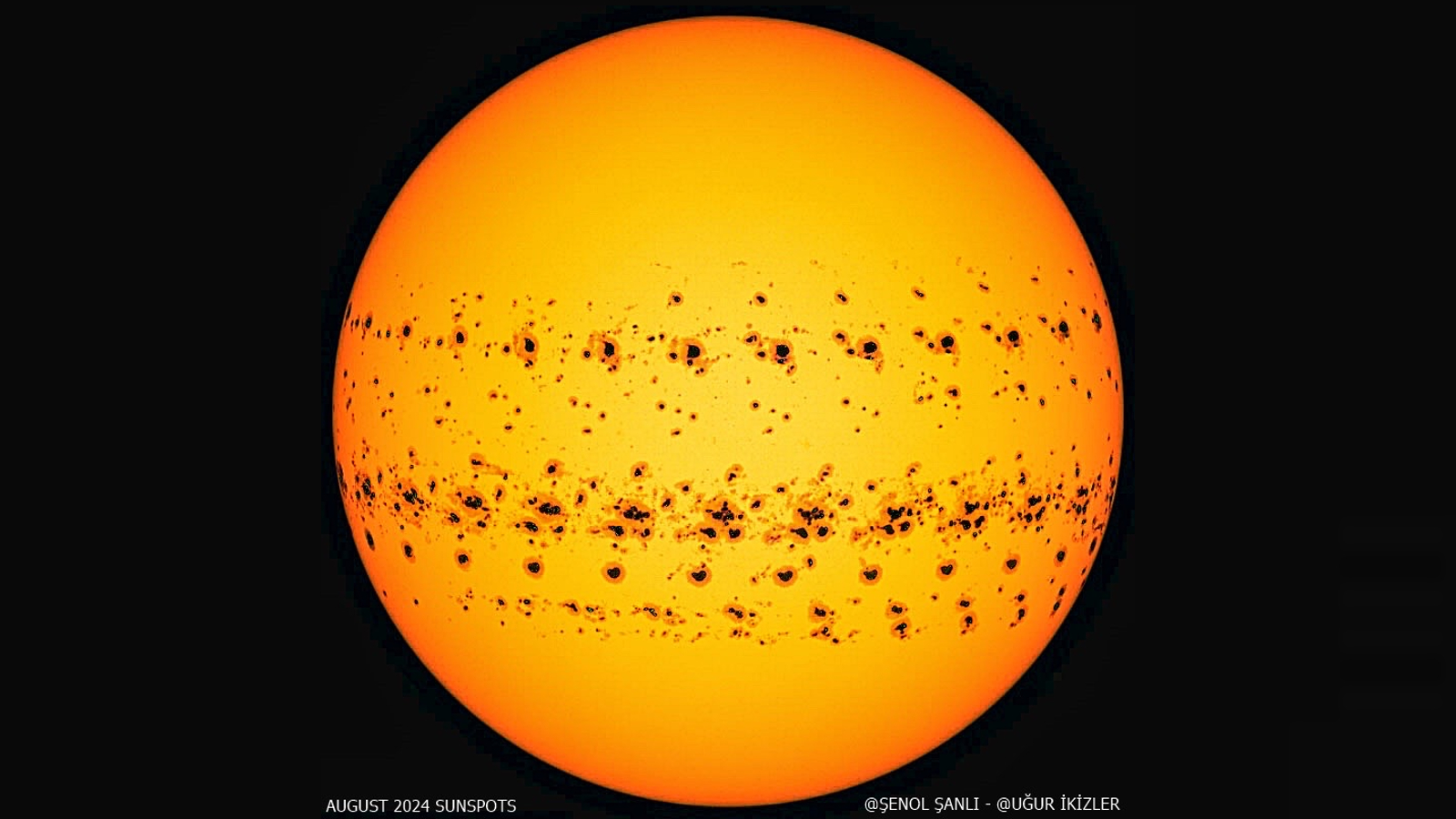
Sunspots surge to 23-year high as solar maximum continues to intensify far beyond initial expectations
By Harry Baker published
The average number of visible dark patches on the sun's surface in August was higher than any other month since September 2001. The final count was more than twice as high as experts initially predicted it would be.
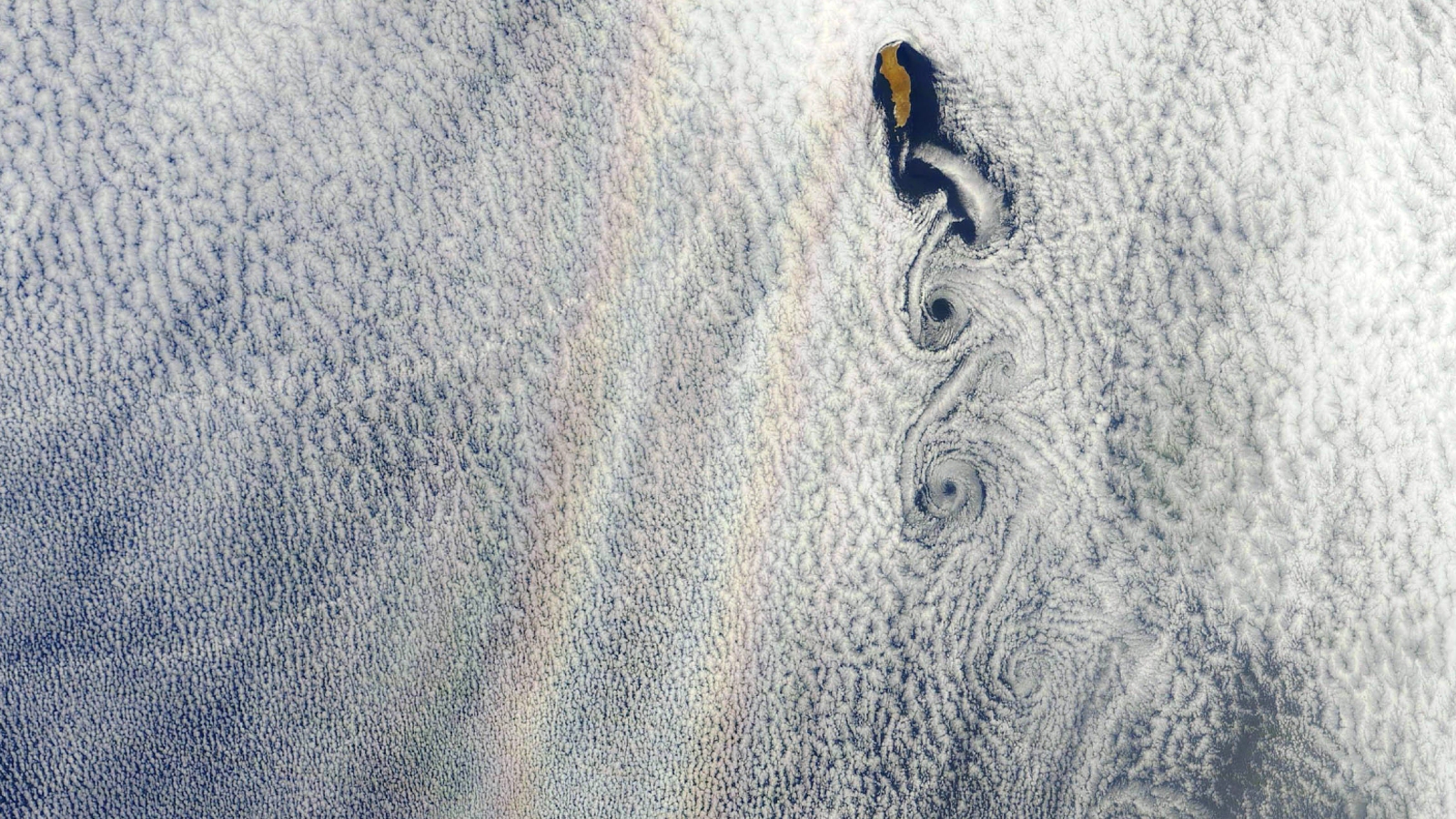
Warped 'double rainbow' glory appears next to rare cloud swirls over Mexican island
By Harry Baker published
Earth from space A 2012 satellite photo captured an unusual "double rainbow" glory appearing next to an unconnected chain of rare vortices in the clouds above Mexico's Guadalupe Island.
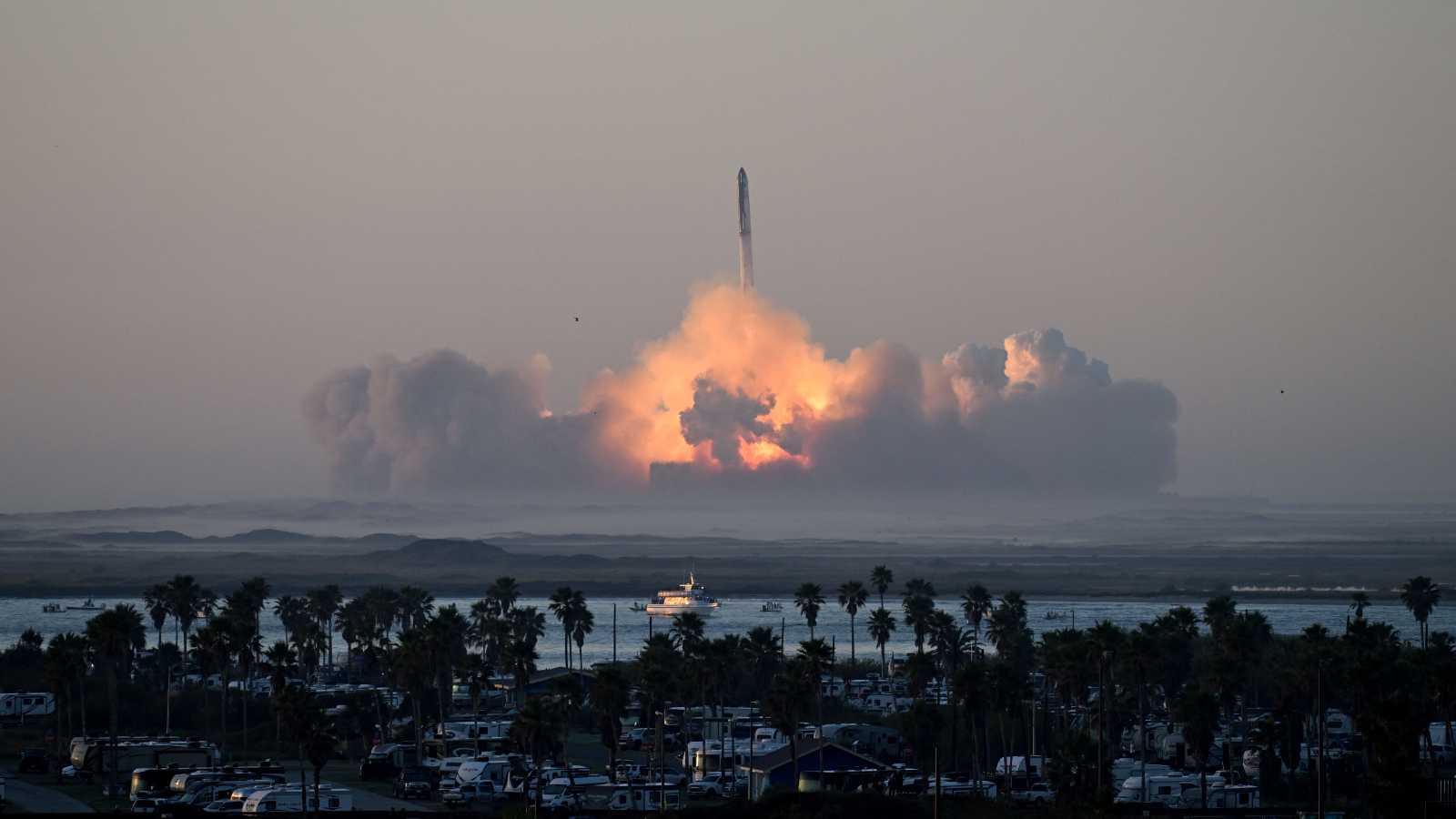
'Catastrophic' SpaceX Starship explosion tore a hole in the atmosphere last year in 1st-of-its-kind event, Russian scientists reveal
By Harry Baker published
A new study from Russian scientists claims that the unexpected detonation of SpaceX's Starship rocket during a test flight in November 2023 tore an "ionospheric hole" in the upper atmosphere. It is the first time this type of hole has been created by a human-caused explosion.
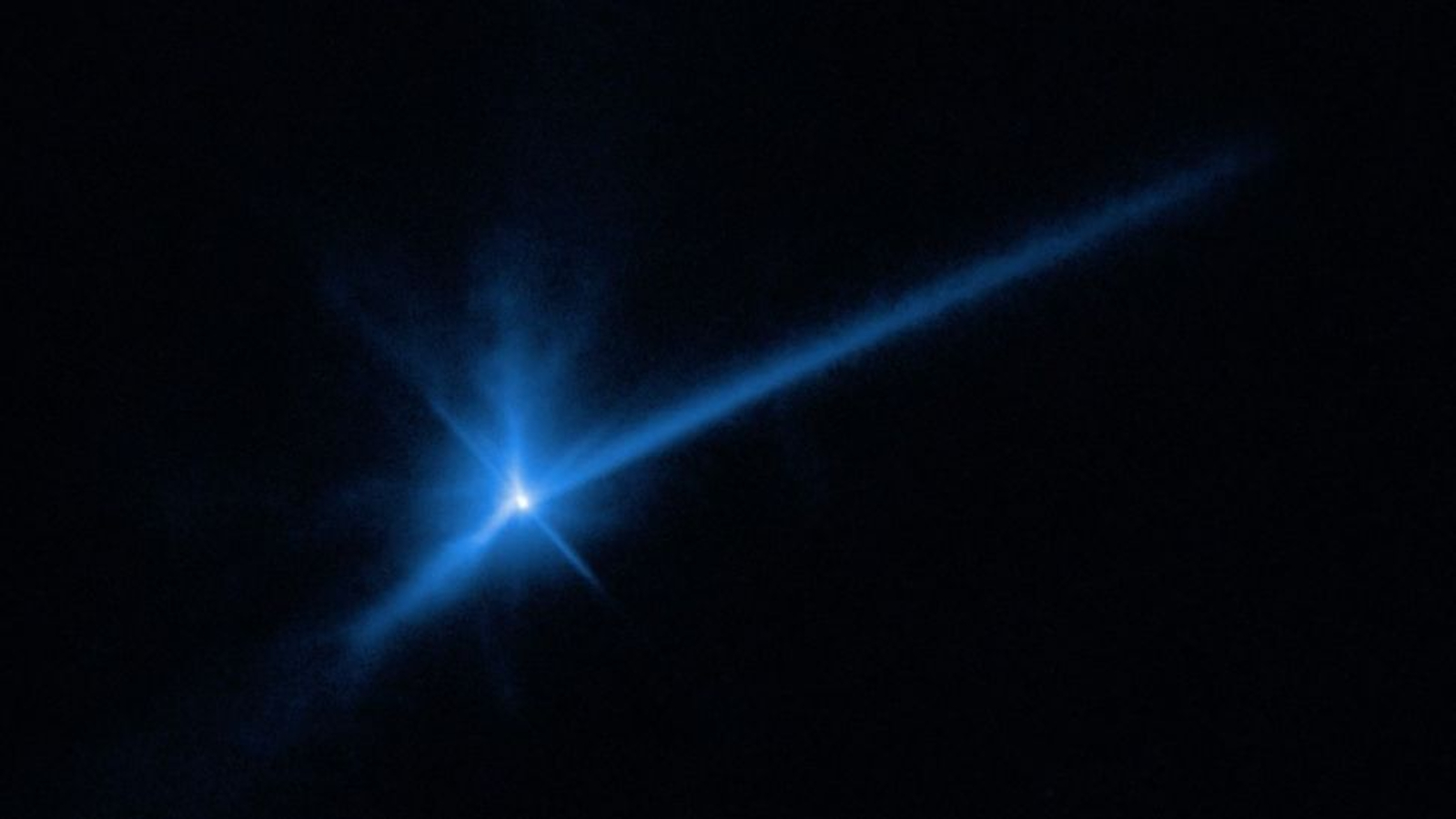
Fallout from NASA's asteroid-smashing DART mission could hit Earth — potentially triggering 1st human-caused meteor shower
By Harry Baker published
A new study suggests that millions of tiny space rock fragments, which were ejected from the 2022 collision between asteroid Dimorphos and NASA's DART spacecraft, may be on a collision course with Earth and Mars.
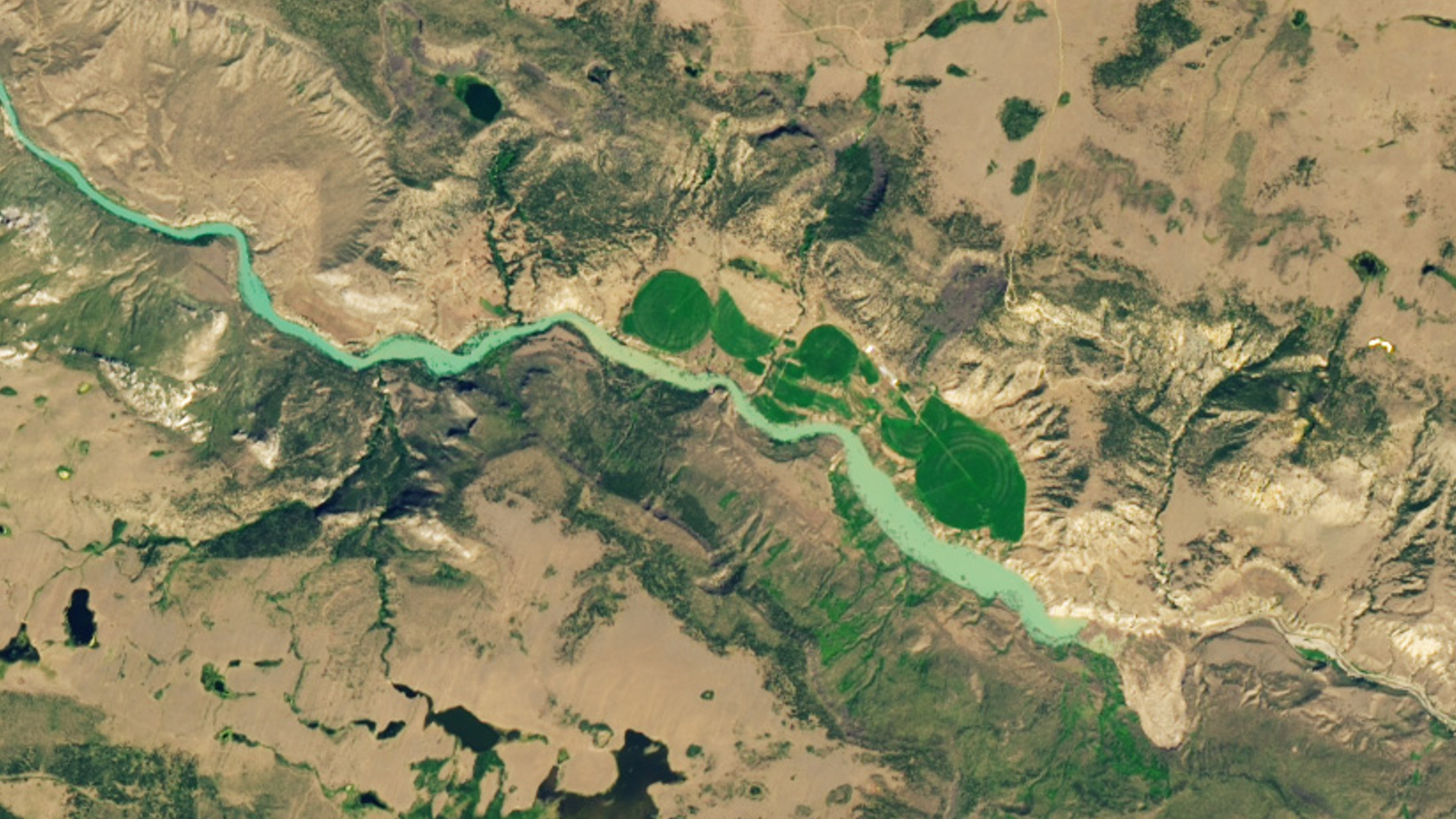
Massive landslide dams Canadian river, trapping endangered fish on the wrong side
By Harry Baker published
Earth from space A recent landslide along the banks of a river in British Columbia completely dammed the waterway, leading to evacuation warnings and potentially dooming an endangered fish population trapped on the wrong side of the debris.
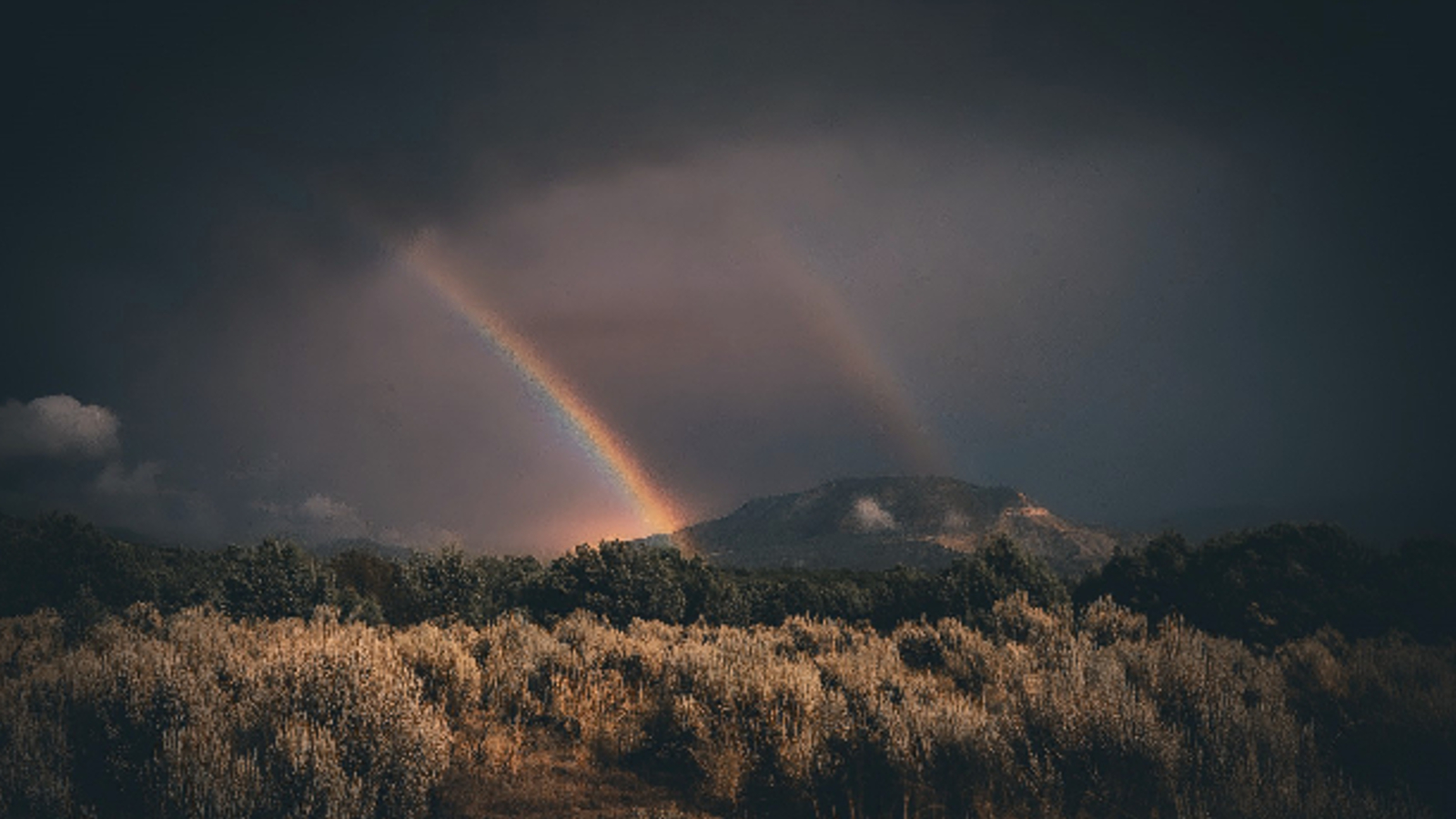
Rare 'moonbows' light up night sky across US as blue supermoon rises — and you could still spot another one
By Harry Baker published
At least two lunar rainbows, including a stunning "double moonbow," have been spotted above the U.S. in the lead-up to the blue supermoon. And there is still a chance to see one of these elusive arches for yourself.
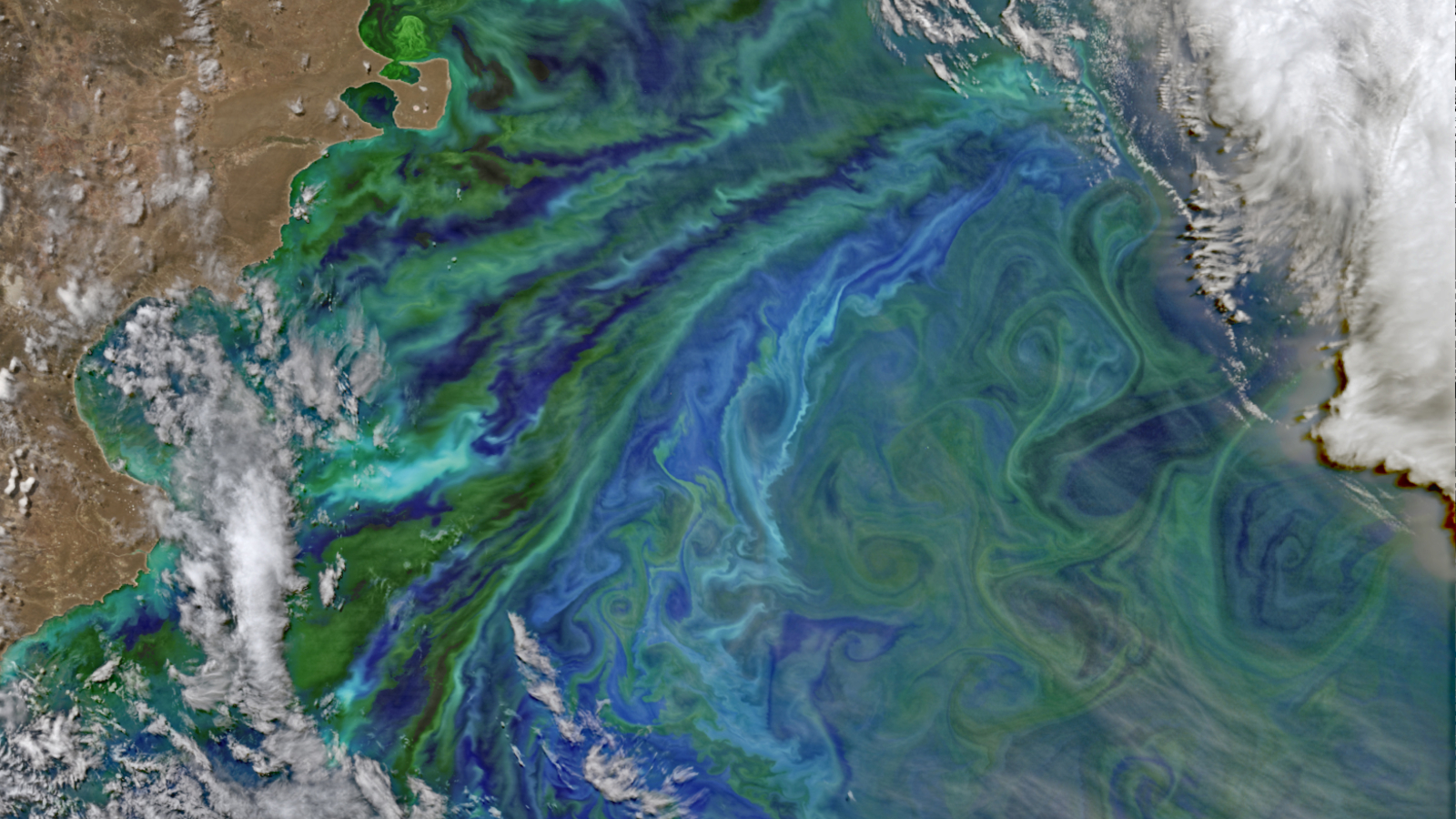
Picturesque plankton paint peculiar patterns in Patagonia
By Harry Baker published
Earth from space This 2014 satellite photo shows a gigantic, multicolor phytoplankton bloom swirling off the coast of Argentina. More recent research has shown that similarly massive algal outbreaks may become less likely in the future thanks to climate change.
Sign up for the Live Science daily newsletter now
Get the world’s most fascinating discoveries delivered straight to your inbox.
